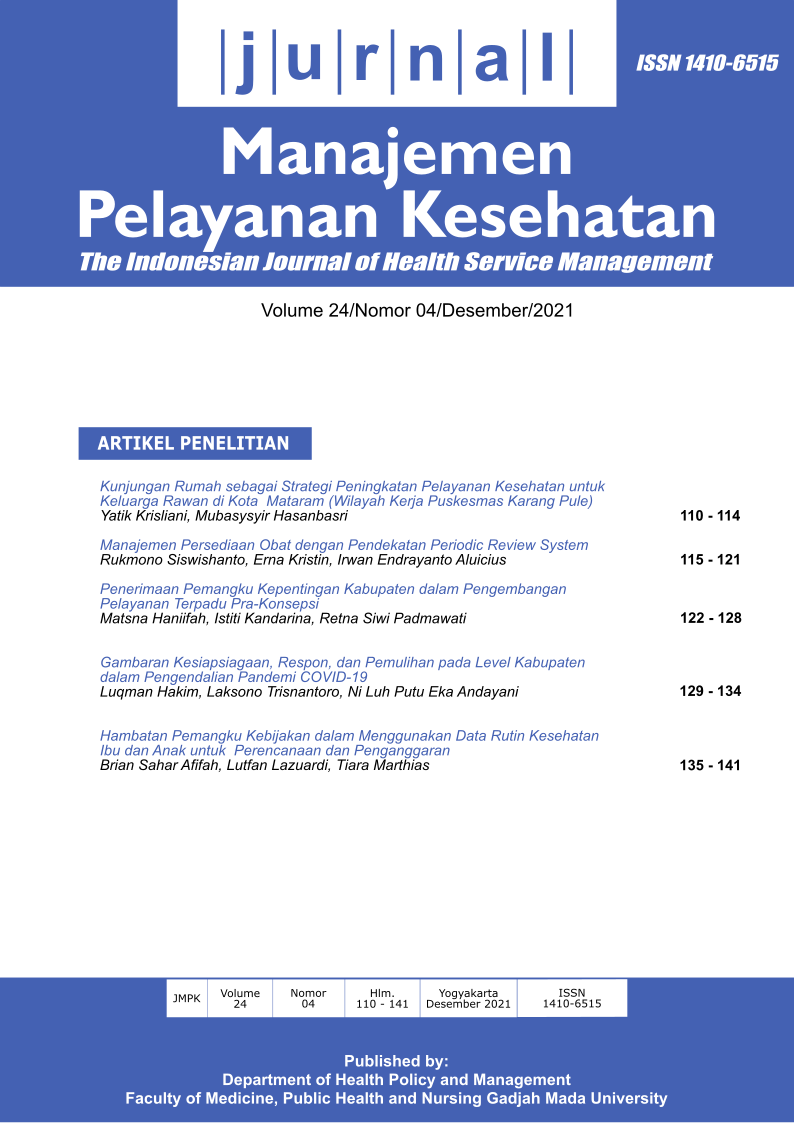MANAJEMEN PERSEDIAAN OBAT DENGAN PENDEKATAN PERIODIC REVIEW SYSTEM
DRUG INVENTORY MANAGEMENT WITH APPROACH PERIODIC REVIEW SYSTEM
Abstract
Background: Continuity of drug availability in hospitals with no excessive supplies is still a problem. The range of inaccuracies in the plan for drug needs can be wasteful in procurement costs and affect the continuity of health services. Hospitals need to improve historical processing data on drug absorption to optimize drug demand planning.
Objective: The research aimed to simulates optimizing the planning and control of drug inventory using the periodic review system.
Methods: Case study research to plan drug needs, using daily drug uptake data longitudinally (2014-2017). The obtained formulas are used to perform simulations by comparing drug supplies based on existing methods with optimization methods on accurate uptake data in 2018. Interviews In-depth research is carried out on informants selected based on the relationship with system. Data analysis was performed using the t-test statistical test and qualitative data were analyzed using open coding.
Results: An assessment of 10 types of drugs, each of 5 drugs has carried out in the fast moving and slow-moving groups. Eight out of the ten drugs reviewed, there were significant differences in drug supply between the existing method and the periodic review system method. The price of drug supplies during 2018 is Rp.13,315,337,556, while the existing method is Rp. 16,481,465,208. There were 25 cases of drug shortages worth Rp. 655,282,174 in the periodic review system method that is lower than the existing method, which is 31 instances of drug shortages worth Rp.756,743,295.
Conclusion: The periodic review system method has advantages compared to existing methods in terms of fewer inventories and cost needs, and the occurrence of fewer drugs shortages and the budget to finance the drug shortages rates. Thus periodic review system method has the potential to improve the planning of drug needs in hospitals.
Copyright (c) 2022 Rukmono Siswishanto, Erna Kristin, Irwan Endrayanto Aluicius

This work is licensed under a Creative Commons Attribution-NonCommercial-ShareAlike 4.0 International License.




